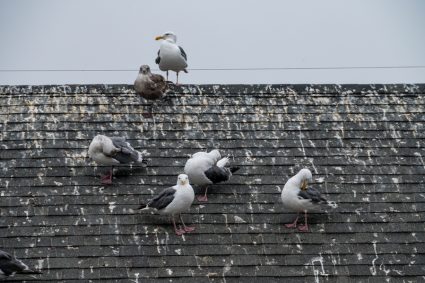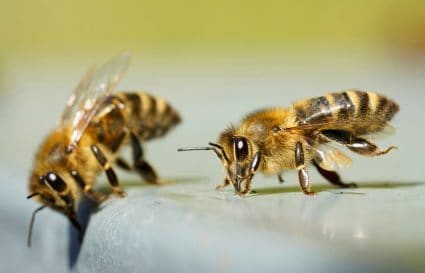
Squirrels might be cute and playful creatures to watch in your backyard, but if they find their way into your attic, they can cause significant damage and become a nuisance. This comprehensive guide will walk you through various methods and precautions to keep squirrels out of your attic.
To keep squirrels out of your attic, first identify and seal all potential entry points using durable materials like steel mesh or metal flashing. Install a one-way door or live trap at one of the entry points to allow squirrels to exit but not re-enter. Remove potential food sources near your home and trim trees and shrubs to prevent squirrels from jumping onto your roof. Use natural repellents and install deterrents to discourage squirrels. If all else fails, consider seeking professional help. Always ensure to follow local and state laws regarding squirrel removal.
Identifying the Problem
Before we dive into the solutions, it’s essential to understand why squirrels might choose your attic as their new home. Squirrels are attracted to attics primarily because they provide a safe and warm environment for nesting and protection from predators. Moreover, attics are typically quiet and undisturbed, making them the perfect breeding ground.
Signs of a squirrel infestation include hearing noises like scurrying, scratching, or chewing in your attic, finding squirrel droppings, or noticing damage such as chewed wires, insulation, or wood. If you have noticed any of these signs, it’s time to take action.
Step-by-step Guide to Squirrel-proof Your Attic
1. Identify entry points
The first step in keeping squirrels out of your attic is to identify how they are getting in. Squirrels can fit through small openings and are excellent climbers and jumpers. Inspect your home for any gaps or holes in the roof, vents, soffits, and even walls.
2. Seal up entry points
Once you have identified all possible entry points, it’s time to seal them up. However, leave one entry point open for trapping purposes. Use materials like hardware cloth, metal flashing, or steel mesh to cover these openings. Avoid using wood or other softer materials as squirrels can chew through them.
3. Install a one-way door or live trap
Install a one-way door excluder or live trap over the remaining unsealed entry point. This will allow squirrels to exit the attic but prevent them from re-entering. Once all the squirrels are out, you can seal the last entry point.
4. Remove potential food sources
Squirrels are opportunistic feeders and will eat anything available. Remove bird feeders, pet food, and secure your garbage cans to discourage squirrels from coming near your home.
5. Trim trees and shrubs
Trim trees and shrubs at least 5 feet away from your house to prevent squirrels from jumping onto your roof and accessing your attic.
6. Use natural repellents
Natural squirrel repellents like hot pepper, peppermint oil, or apple cider vinegar can be used around your home and garden to deter squirrels.
7. Install deterrents
Consider installing deterrents such as motion-activated sprinklers, strobe lights, or ultrasonic devices to scare away squirrels.
When to Seek Professional Help
If you have tried these methods and still find squirrels in your attic or the damage is extensive, it may be time to seek professional help. Pest control services like Critter Control, Trutech Wildlife Service, AAAC Wildlife Removal, and Urban Wildlife Trapping Experts specialize in humane squirrel removal and can provide a long-term solution.
Legal Considerations
Remember to check your local and state laws regarding squirrel removal. In some areas, squirrels are considered protected wildlife, and specific regulations may apply to their removal. Always opt for humane methods and avoid lethal means if at all possible.
Conclusion
Squirrels in your attic can cause significant damage and potential health risks. However, with careful inspection, preventive measures, and possible professional help, you can successfully keep squirrels out of your attic. Remember, the key is to act promptly and humanely.
Frequently Asked Questions
What time of the year do squirrels usually nest in attics?
Squirrels typically nest in attics during late winter or early spring when they are looking for a safe and warm place to raise their young. However, they can also seek shelter in attics during other times of the year, especially in cold climates.
What are some health risks associated with squirrels in the attic?
Squirrels can carry ticks, fleas, and other parasites which may transmit diseases. Moreover, their droppings and urine can contaminate insulation and wood, potentially leading to the growth of mold and fungus, which can cause respiratory issues if inhaled.
How long does it usually take to get rid of squirrels from the attic?
The time it takes to completely remove squirrels from your attic can vary depending on the severity of the infestation and the methods used. It could take anywhere from a few days to a couple of weeks. Remember, patience is key in this process.
Can I use any type of trap to catch squirrels?
It’s best to use live traps designed specifically for squirrels. These traps are humane and designed in a way that won’t harm the squirrel. Always check your local and state laws regarding trapping squirrels, as it may be illegal in some areas.
Is it necessary to hire a professional to remove squirrels from the attic?
While it’s possible to remove squirrels from your attic on your own using the steps outlined in this guide, sometimes the situation may require professional help. If the infestation is severe, if there’s extensive damage, or if you’re uncomfortable handling the situation yourself, it’s best to hire a professional pest control service.












